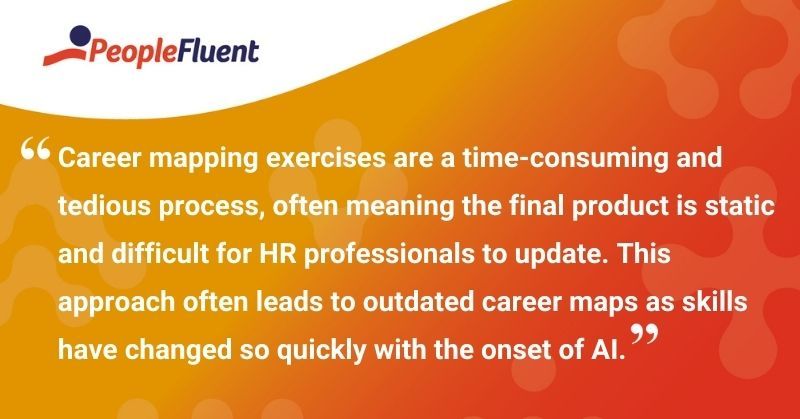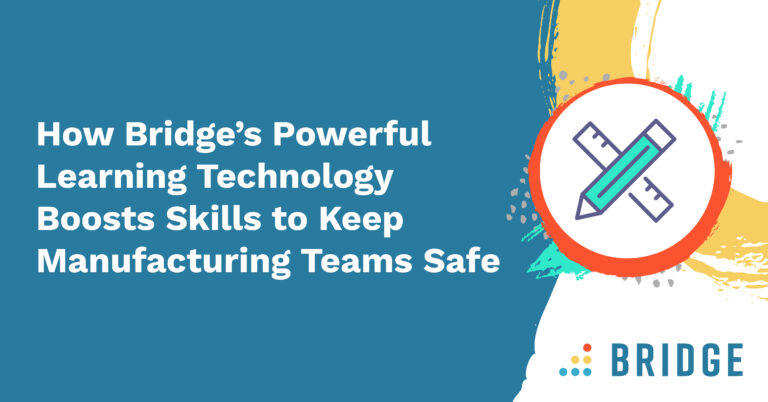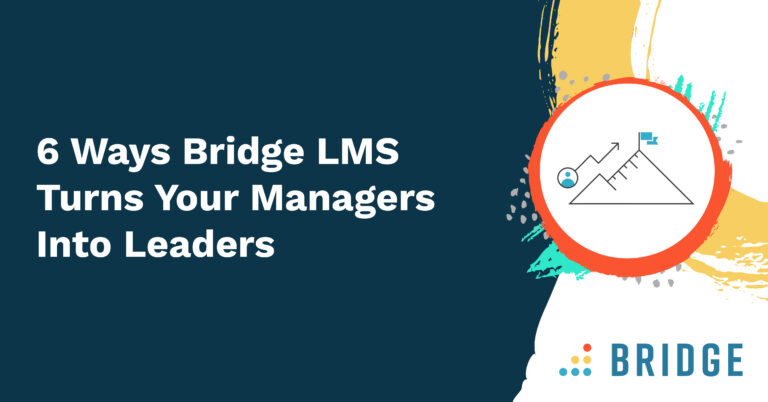For quite a while, companies relied heavily on job boards or career maps to help employees discover opportunities within the company. However, career mapping at scale is difficult without the right technology solution. Because of this, it isn’t always the best approach for your organization as it lacks real-time updates that are necessary for employees and business outcomes to progress. With the widespread use of automation and other technological advancements, a new way to chart a modern talent journey has arrived: AI-driven career pathing.
What Is Career Pathing?
AI-driven career pathing has emerged in recent years to fill the gaps left by internal job boards and/or internal career sites. Technology is advancing at a rapid pace, and so are the organizations using it. Although career maps and job boards are still a necessary function within talent acquisition, they may not be well-suited for every industry or organization—nor are these methods always the most efficient way for companies to source internal talent.
Career pathing is integral to a successful talent mobility strategy as it allows companies to focus on career progression planning. This also enables employees to map a clearly defined path to their next position in your organization rather than seeking outside opportunities with another company.
Ideally, career pathing will work in conjunction with your internal mobility efforts and will help your employees build and follow multi-directional career paths in order to redesign their career experience. Skills become paramount when thinking about multi-directional career paths. Helping employees understand how skills overlap horizontally across the organization to unlock new opportunities is imperative for career growth and development.

KEEP READING | ‘The 5 Pillars of a Successful Talent Mobility Strategy and How to Leverage Them’
How Career Pathing Challenges the “Old Way” of Employee Progression
Traditionally, internal job boards focused on helping employees find another opening, but if there were no openings, an employee would be more inclined to search externally (such as on LinkedIn or Indeed). This ultimately led to the employee leaving the company. Today, organizations are now looking for better ways to help employees understand the unique positions and career paths—even when there are no job openings.
This enhanced visibility gives employees deeper insight into what a specific role does, the required skillset, and how they could move into that specific role if (or when) it becomes available.
Prior to career pathing technology, companies relied on career maps or career frameworks. This required an HR professional to contact a third party/vendor that would interview each employee in order to map that position or career to competencies and skills. This allowed the third party to build the career architecture of the entire organization, based on function and job title and mapped out as competencies and skills. This data would be used to create a document (ie. career map) and was hosted internally for employees to click and view.
The issue with this approach is that career mapping exercises would take a long time and were a tedious process, often meaning the final product was static and difficult for HR professionals to update. With the rapid changes that have taken place in our talent markets, coupled with this type of project often being cumbersome to scale and thus deprioritized, the approach led to outdated career maps as skills changed so quickly with the onset of AI.

YOU MIGHT ALSO LIKE | ‘Growing Skills & Retaining People: How to Successfully Mentor in the Workplace’
Automating the Career Pathing Process
By automating the career pathing process, organizations are now able to create meaningful career progression as well as skills development in an agile manner. AI allows companies to match employees with potential roles that align to their skills and career aspirations, preparing them to take the next step toward career progression faster.
Building career paths at scale helps to reduce the burden on HR or third parties to build career maps and match employees to potential roles. Companies can leverage market data in order to see how jobs and skills are shifting in specific industries to create a baseline for building career pathing. This information can then be used to personalize the internal mobility experience for their specific industry.
AI-Driven Career Pathing has not only made it easier for HR to scale career pathing internally, it’s also helping employees grow as they’re constantly learning about new skills they can develop in addition to finding roles internally.
MORE FROM THE BLOG | ‘5 Things HR Pros Can Do to Ensure a Modern Talent Journey’
Organizational Benefits of Implementing Career Pathing
Using AI to fuel career pathing means companies can plan for future growth and avoid missteps along the way—and therefore, go beyond career mapping. This happens by preparing current employees for the shifting workplace; simply offering training opportunities is no longer enough.
Career pathing software helps organizations:
- take an employee’s resume and leverage AI to parse it for skills, experiences, and competencies
- look at prior roles held in order to help the employee identify and explore different roles
- expose employees to the possibilities of new horizontal careers
On that last point, just because someone enters an organization in the finance department, for instance, doesn’t mean they’ll aspire to become CFO. Based on their core skill set, the employee could move horizontally into a different career.
Talent mobility helps employees understand which skills they need to brush up on to attain such a role. AI will notify the employee proactively once they ‘like’ or ‘save’ a career within a career pathing platform. Furthermore, the system will provide the employee with developmental activities—like learning materials or stretch projects to participate in—as well as mentors who are in a similar role and have strong skill sets.
From an organizational standpoint, career pathing enhances the company’s ability to fill key positions without relying solely on external recruiting. Talent acquisition leaders are able to expand their talent pools which reduces the time and money spent during the acquisition process.

RELATED READING TO DOWNLOAD TODAY | ‘5 Recruiting Metrics that Drive Business Value’
Editor’s note: A version of this article was previously published (October ’18) on the PeopleFluent



